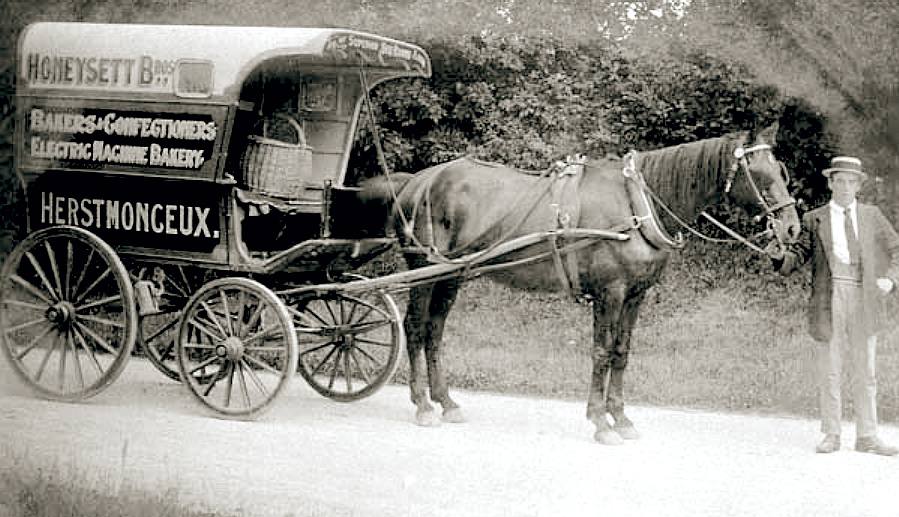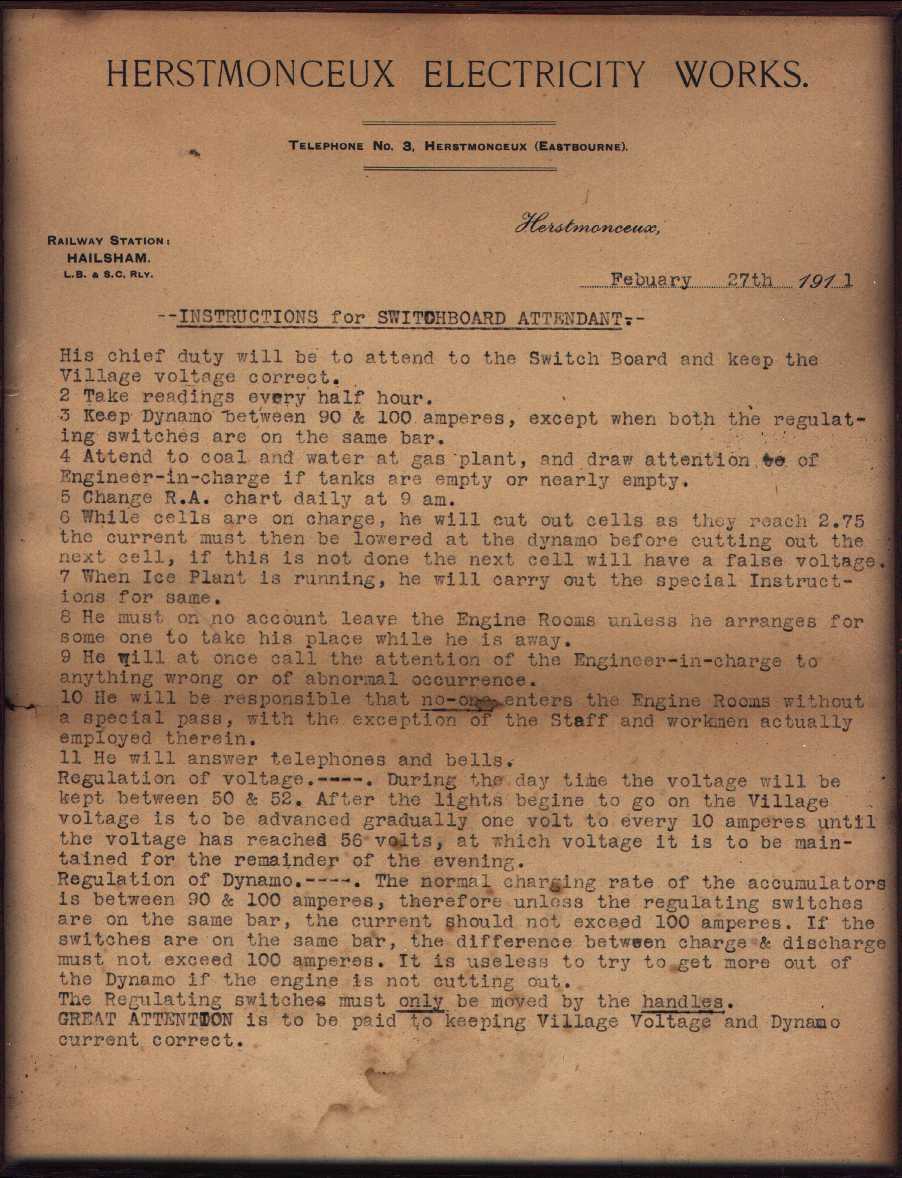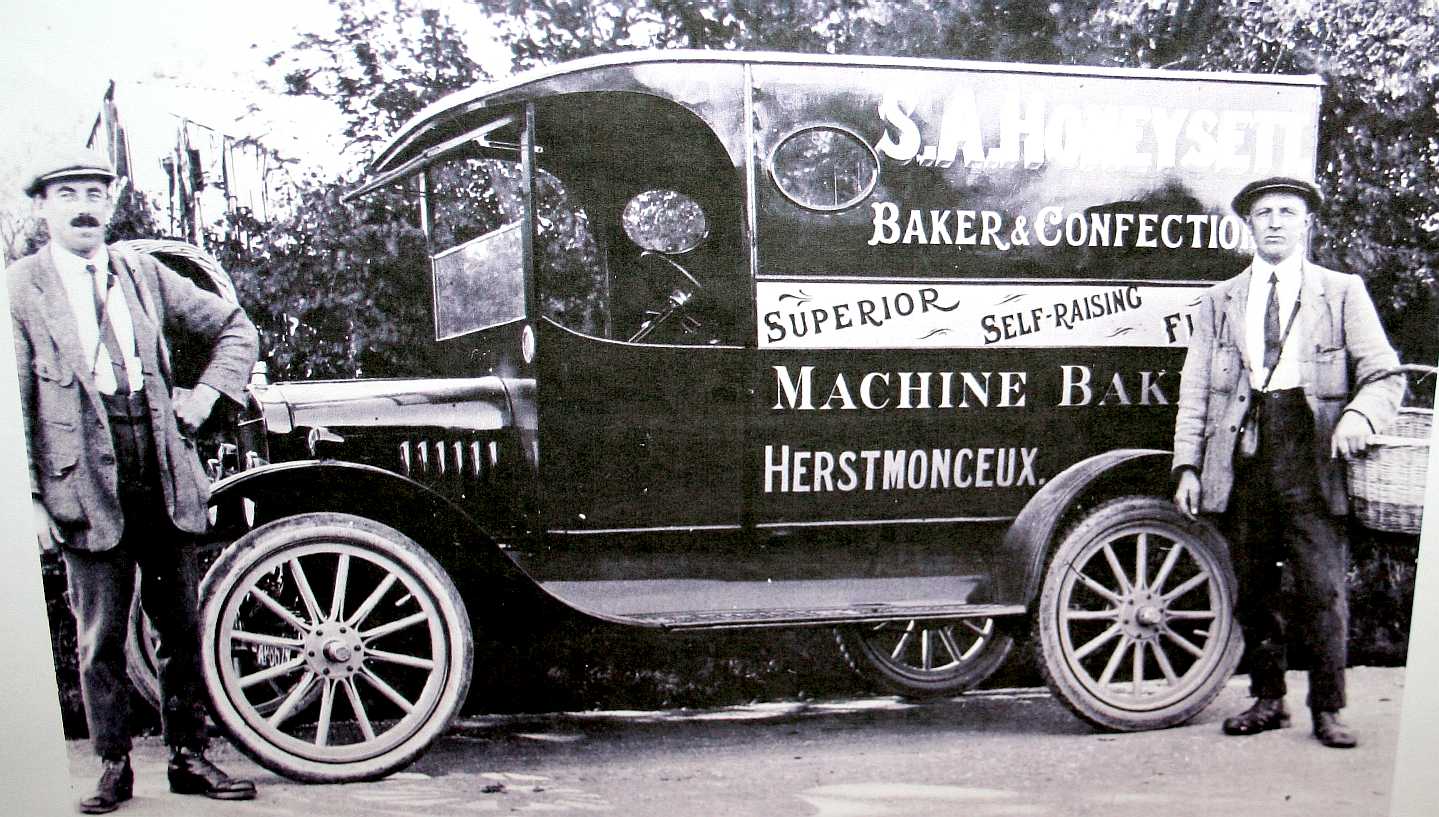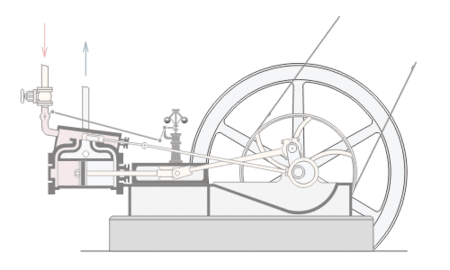|

Who
has ever heard of a Bakery with electric machinery when horse drawn
deliveries were the norm? Herstmonceux had electricity well before most
large towns, because of Major Charles de Roemer, who also manufactured
seaplanes for the British Admiralty (Royal Navy) in Eastbourne, from
1911 to 1924.
According
to UNESCO's
listing page, there are 1157 properties in 167 member states as
reproduced below. From a cursory look at the list, it appears that there
are no entries, anywhere in the world, for electricity generation, or
energy storage, on its own merits, or as pertains to the developing
renewable energy industry. It must surely be then, that it is doubly
important to survey the planet, for other sites of similar significance
- to know one way or the other, if the Generating Station at
Herstmonceux Museum in Sussex, England, is the only remaining example in the
world. Presently, unprotected, and not recognised for its technical or
cultural contribution in the development of mankind.
- Chartres
Cathedral
- Mont-Saint-Michel
and its Bay
- Palace
and Park of Versailles
- Prehistoric
Sites and Decorated Caves of the Vézère Valley
- Vézelay,
Church and Hill
- Amiens
Cathedral
- Arles,
Roman and Romanesque Monuments
- Cistercian
Abbey of Fontenay
- Palace
and Park of Fontainebleau
- Roman
Theatre and its Surroundings and the "Triumphal
Arch" of Orange
- From
the Great Saltworks of Salins-les-Bains to the Royal
Saltworks of Arc-et-Senans, the Production of Open-pan
Salt
- Abbey
Church of Saint-Savin sur Gartempe
- Gulf
of Porto: Calanche of Piana, Gulf of Girolata,
Scandola Reserve #
- Place
Stanislas, Place de la Carrière and Place d'Alliance
in Nancy
- Pont
du Gard (Roman Aqueduct)
- Strasbourg,
Grande-Île and Neustadt
- Cathedral
of Notre-Dame, Former Abbey of Saint-Rémi and Palace
of Tau, Reims
- Paris,
Banks of the Seine
- Bourges
Cathedral
- Historic
Centre of Avignon: Papal Palace, Episcopal Ensemble
and Avignon Bridge
- Canal
du Midi
- Historic
Fortified City of Carcassonne
- Pyrénées
- Mont Perdu *
- Historic
Site of Lyon
- Routes
of Santiago de Compostela in France
- Belfries
of Belgium and France *
9
- Jurisdiction
of Saint-Emilion
- The
Loire Valley between Sully-sur-Loire and Chalonnes
10
- Provins,
Town of Medieval Fairs
- Le
Havre, the City Rebuilt by Auguste Perret
- Ancient
and Primeval Beech Forests of the Carpathians and
Other Regions of Europe *
- Bordeaux,
Port of the Moon
- Fortifications
of Vauban
- Lagoons
of New Caledonia: Reef Diversity and Associated
Ecosystems
- Episcopal
City of Albi
- Pitons,
cirques and remparts of Reunion Island
- Prehistoric
Pile Dwellings around the Alps *
- The
Causses and the Cévennes, Mediterranean agro-pastoral
Cultural Landscape
- Nord-Pas
de Calais Mining Basin
- Decorated
Cave of Pont d’Arc, known as Grotte Chauvet-Pont
d’Arc, Ardèche
- Champagne
Hillsides, Houses and Cellars
- The
Climats, terroirs of Burgundy
- The
Architectural Work of Le Corbusier, an Outstanding
Contribution to the Modern Movement *
- Taputapuātea
- Chaîne
des Puys - Limagne fault tectonic arena
- French
Austral Lands and Seas
- Cordouan
Lighthouse
- Nice,
Winter Resort Town of the Riviera
- The
Great Spa Towns of Europe *
- Rock
Drawings in Valcamonica
- Church
and Dominican Convent of Santa Maria delle Grazie with
“The Last Supper” by Leonardo da Vinci
- Historic
Centre of Rome, the Properties of the Holy See in that
City Enjoying Extraterritorial Rights and San Paolo
Fuori le Mura *
14
- Historic
Centre of Florence
- Piazza
del Duomo, Pisa
- Venice
and its Lagoon
- Historic
Centre of San Gimignano
- The
Sassi and the Park of the Rupestrian Churches of
Matera
- City
of Vicenza and the Palladian Villas of the Veneto
- Crespi
d'Adda
- Ferrara,
City of the Renaissance, and its Po Delta 15
- Historic
Centre of Naples
- Historic
Centre of Siena
- Castel
del Monte
- Early
Christian Monuments of Ravenna
- Historic
Centre of the City of Pienza
- The
Trulli of Alberobello
- 18th-Century
Royal Palace at Caserta with the Park, the Aqueduct of
Vanvitelli, and the San Leucio Complex
- Archaeological
Area of Agrigento
- Archaeological
Areas of Pompei, Herculaneum and Torre Annunziata
- Botanical
Garden (Orto Botanico), Padua
- Cathedral,
Torre Civica and Piazza Grande, Modena
- Costiera
Amalfitana
- Portovenere,
Cinque Terre, and the Islands (Palmaria, Tino and
Tinetto)
- Residences
of the Royal House of Savoy
- Su
Nuraxi di Barumini
- Villa
Romana del Casale
- Archaeological
Area and the Patriarchal Basilica of Aquileia
- Cilento
and Vallo di Diano National Park with the
Archeological Sites of Paestum and Velia, and the
Certosa di Padula
- Historic
Centre of Urbino
- Villa
Adriana (Tivoli)
- Assisi,
the Basilica of San Francesco and Other Franciscan
Sites
- City
of Verona
- Isole
Eolie (Aeolian Islands)
- Villa
d'Este, Tivoli
- Late
Baroque Towns of the Val di Noto (South-Eastern
Sicily)
- Sacri
Monti of Piedmont and Lombardy
- Monte
San Giorgio *
- Etruscan
Necropolises of Cerveteri and Tarquinia
- Val
d'Orcia
- Syracuse
and the Rocky Necropolis of Pantalica
- Genoa:
Le Strade Nuove and the system of the
Palazzi dei Rolli
- Ancient
and Primeval Beech Forests of the Carpathians and
Other Regions of Europe *
- Mantua
and Sabbioneta
- Rhaetian
Railway in the Albula / Bernina Landscapes *
- The
Dolomites
- Longobards
in Italy. Places of the Power (568-774 A.D.)
- Prehistoric
Pile Dwellings around the Alps *
- Medici
Villas and Gardens in Tuscany
- Mount
Etna
- Vineyard
Landscape of Piedmont: Langhe-Roero and Monferrato
- Arab-Norman
Palermo and the Cathedral Churches of Cefalú and
Monreale
- Venetian
Works of Defence between the 16th and 17th Centuries: Stato
da Terra – Western Stato da Mar *
- Ivrea,
industrial city of the 20th century
- Le
Colline del Prosecco di Conegliano e Valdobbiadene
- Padua’s
fourteenth-century fresco cycles
- The
Great Spa Towns of Europe *
- The
Porticoes of Bologna
|
Assuming, that our initial appraisal is verified. We hope one day to be
included on this list, even knowing in advance, that there is a tremendous
amount of work to be done before even tentative listing, and then final
inclusion. Amounting to a staggering administrative, burden, allied to
management and maintenance of the site, just to stave off any further wood
rot, flora or fauna encroachment. You'd be surprised how damaging wildlife
can be, as can weed infestation and hurt from weathering, blocked gutters
and drains, etc.
Knowing of these rigours, our grateful thanks and thoughts go out to
everyone who gave of their time, to preserve the fabulous sites above,
whether natural or cultural, for the future enjoyment of our children.

These
instruction from February of 1911, reveal a great deal about the
technology on site. They are on of the exhibits on display, alongside
other innovative firsts that took place in this Sussex backwater.
CONTACT
UNESCO
UNESCO Headquarters
7 place Fontenoy,
75007 Paris, France.
Telephone: +33 (0)1 4568 1000
Email: info@unesco.org
Web: https://www.unesco.org/
https://whc.unesco.org/en/list/
UK TENTATIVE LIST
2024 >>>
Should
Herstmonceux
Electricity Generating Works & Battery Energy Storage Utility be
included, the complex would come under the heading 'Energy Technology.' The
Trust share the same ideals, aims and objectives as those defined by the
World Heritage Convention 16th November 1972.

It
looks as though the Honeysett Brothers (S & A), seen in the picture
above, prospered as a result of the Electric Machine Bakery, proudly
continuing to advertise this fact well into the era of petrol driven
vans for deliveries. And note, the wheels are wooden. Note also the
wicker basket used to deliver loaves. The only surprise here is that the
Herstmonceux Bakery, and indeed, Major de Roemer, were not driving
electric vehicles. Herstmonceux Museum operates an electric BMW i3,
intending to use it as a shuttle service for patrons from 2024.



|